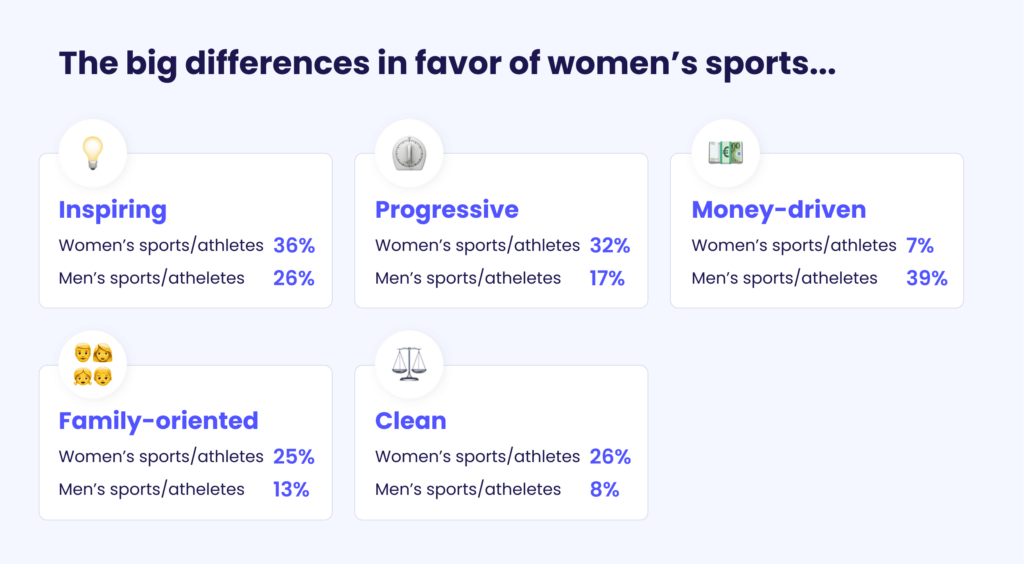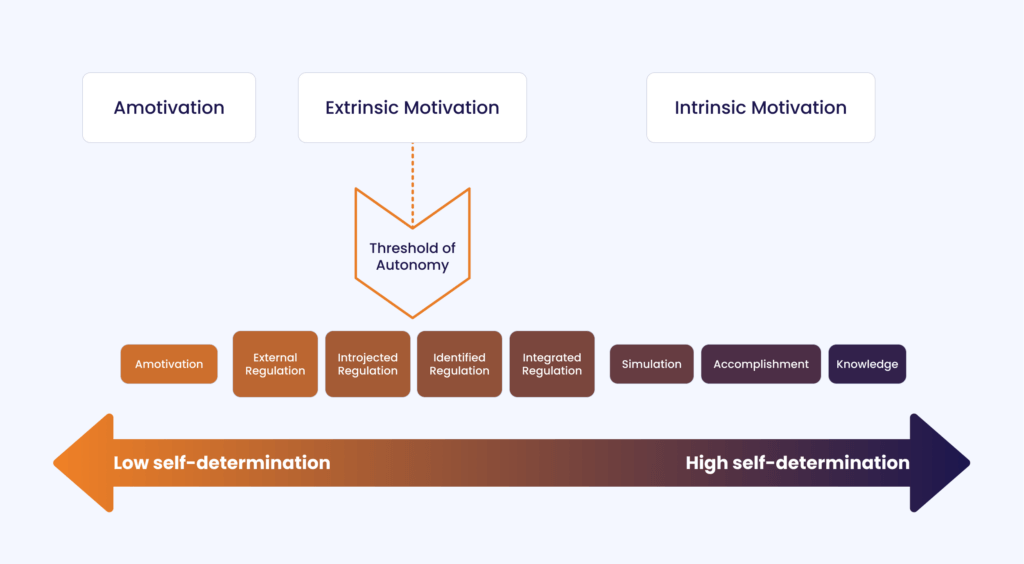
In the words of Aristotle, the human being is “the most imitative creature in the world, and learns at first by imitation”. And this is crucial because “it allows us to learn new things quickly and efficiently by watching those around us” (May Institute). So naturally, even in sports, we look to those who have years of success under their belts and try to emulate their recipe for success. However, in today’s blog post we want to shed some light on how to “stand on the shoulders of giants” in the right way instead of merely copying and pasting everything. So, continue reading to find out why women’s clubs should not emulate the men’s club’s strategy.
Before we dive right in...
Subscribe to our blog today to ensure that you never miss valuable posts such as this one. We are passionate about helping sports organizations deliver a world-class fan experience, because better fan experience means better business. So why not use this opportunity to the fullest?

How the history of women’s sports led to where we are today
From women only being allowed to take part in a limited selection of sports at the Olympics to the FA banning women’s football – women have historically faced many obstacles in their desires to freely participate in sports, just like the 50% of the rest of the population – men. However, we have come a long way since then. For example, Barcelona beat their own record for women’s football attendance when 91 648 fans turned up to watch their game against Wolfsburg. The ICC Women’s T20 World Cup final broke attendance records with 86 174 spectators. “It was the largest attendance for a women’s cricket match, for a women’s or men’s T20 World Cup final, and for a women’s sporting event in Australia” (givemesport.com).
This amazing recovery from a tough history to breaking records is, however, not a true depiction of the whole industry. Larger clubs, such as Barcelona, and prestigious tournaments, indeed such as the ICC World Cup have gotten bigger. Leagues across the world have gotten wealthier. But what about smaller clubs? If the disparity amongst men’s clubs is huge, one can only guess the state of women’s clubs. Especially bearing in mind that the women’s sports industry is not yet working data-driven. So as such, there is no data to confirm or deny thoughts and ideas.
Unfortunately, it may be that the data collected in sport is typically about male experiences, and not female; a rather unfortunate omission given that approximately half of the population is made up of women. When female athletes are underrepresented in research there are issues when making inferences about data collected in male dominated research domains to inform practice and policy for female athletes.
Emulating marketing strategies
Emulate: to match or surpass (a person or achievement), typically by imitation; to imitate (Oxford Languages).
On one hand, we do want women’s sports to match the men’s. Some might even want them to surpass the men. To each their own. However, the imitation part is the part we are bringing to question.

When we are not quite sure what the future holds and what the best course of actions is, firms look around them and then do what others are doing. The reasoning is: they can’t all be wrong.
Mostly, firms look at successful others; companies that seem to be outperforming the pack, who are subject to admiration in the business press, at conferences and business schools and by investors in the stock market. Not seldom is the process of imitation formalised in practices such as “bench-marking” and the adoption of “best practices”
The sports industry is no different. Smaller clubs look to bigger clubs for inspiration. Women’s clubs look to men’s clubs. It is just how we operate as human beings. Especially at a time when the sports industry is trying to recover from COVID. Emulating marketing strategies without much thought can feel like the natural thing to do.
But we want to challenge you to go against the grain.
Going against the grain
What is more counterintuitive than choosing not to imitate successful sports organizations? At the end of the day, you want to be as successful as they are. If not more. And of course, we are not saying disregard everything. There are certain things you can and should learn from other sports organizations. Benchmarking is important. Knowing best practices is crucial. However, owning your success and scaling it, will take more than just that. That is the very reason we advise against merely emulating marketing strategies of others. Because then you don’t own your success.
And don’t worry because there are tools and systems that make it easy for you to go against the grain. Especially tools that help you work data-driven. And you know our stance on this – every sports organization should work data-driven.
Let’s take, for example, a sports CDP and how it can help you go against the grain with confidence.
How a sports CDP can help you go against the grain
With a sports CDP, you collect, unify and own your data. And then analyze this data to get actionable insights that you can then act on. But that is not the interesting part.
The interesting part is the value you get out of this process. With a CDP, you can confidently:

rely on up-to-date supporter data to power your decision-making. Instead of looking around at what others are doing, copying that and then hoping it works for you too.

get a better understanding of your supporters. And why does this matter? because only then can you engage with them better. You can do this by hyper-personalizing their experiences.

find new revenue opportunities and leverage those. For example, OTT is a huge asset. Especially in women's sports. You can dig through your data to find out how you can leverage such opportunities.

sell more tickets by targeting the right fans. You can do this through powerful and streamlined fan segmentation.

negotiate better sponsorship deals and boost your sponsorship value, exponentially.

To try it out yourself, check out the Data Talks Sports CDP in action >>
Why women’s clubs should not be emulating marketing strategies from men’s clubs
Now that we have laid out the foundation for why merely emulating marketing strategies you observe from others is never the solution, let’s do a deep dive into today’s context. And the context for this blog is women’s sports contra men’s sports. We are discussing why women’s clubs should not fall into the trap of purely emulating marketing strategies from men’s clubs.
There is no “one size fits all”
Again, this is why we always emphasize working data-driven. And, this is also a strong sports CDP use case – when you understand your supporters, you understand your organization. What do we mean by this?
Well when you understand who your supporters are, what they want from you how they want it, you can then give it to them at the right time and through the right channel. Effectively creating a better supporter experience. And better supporter experience means better business.
This is driven home by the fact that no two human beings are the same. Meaning no two supporters are the same. And if this is the case, then no two organizations’ supporters can ever be the same nor should they be treated as such. So in a nutshell, do not do what another organization is doing because your organization is different from theirs. Instead, understand your supporters better and then turn that into a strategy that works for you.
No two organizations are the same
Let’s continue along with this line of thinking and expand it a little. Emulating marketing strategies as they are is not a good idea because no two organizations are the same. I have been to games where I had to scan a QR code, then walk through a turnstile to enter a large indoor arena. I could order food from an app while in the stadium. Games where the technology is absolutely impressive. But I have also been to games where I had to bring a blanket and a seat pad, collect my paper ticket from the gate and sit in the freezing cold.
No two organizations are the same or can provide the same experience.
That’s because different organizations have different budgets, staff, technologies, reach, and brand value. Therefore, copying a strategy from a men’s club for example, which might have more resources than your club is not the way to go. This also applies to smaller women’s clubs trying to copy the strategy of a big club like Barcelona. It does not always work.
Fans attend games for different reasons
25 % of fans find women’s sports/athletes to be more family-oriented compared to only 13% who say the same about men’s sports (Nielsen Sports). So naturally, you would approach these fans differently. Meaning, different fan engagement strategies for the different fans. Another example, 39% of fans find men’s sports/activities money-driven versus only 7% who say the same about women’s sports (Nielsen Sports). So whilst glitz and glamour in your strategy may be appealing to fans of men’s sports, it might not be as appealing to fans of women’s sports.
So the key takeaway. You should not be emulating marketing strategies of other sports organizations as is. This ties back to our point about understanding your supporters by working data-driven.

Different stakeholders want different things
Another compelling reason against women emulating marketing strategies from men’s clubs is that different stakeholders want different things. We have already looked at supporters and what they want. Let’s now look at what other stakeholders might want.
Players
It’s no secret that sports are competitive. In fact, sports are competitive by default and design. This puts a lot of pressure on players to perform and train as best as they can. Which often leads to injuries – both mentally and/or physically. Although one could possibly argue that all sports players have one thing in common – their passion for playing, one could also argue that this differs from player to player.
Players’ and athletes’ motivations differ on a continuum spectrum from extrinsic to intrinsic.

So when creating a social media strategy as part of your wider fan engagement strategy, for example, you should take into consideration the players themselves and what they want. For most female players, taking part in sports is about principle and passion and not necessarily about making as much money as possible. I mean, there are easier ways for female athletes to make money than playing sports.
Therefore, do not just copy and paste a strategy that you only observe externally. Involve your players in the discussion and come up with a strategy that works for you.
Sponsors
Did you know that women’s sports fans are 25% more likely to buy a sponsor’s products than men’s? And what do your sponsors want at the end of the day? A return-on-investment (ROI). Furthermore, being able to secure a long-term partner who delivers ROI consistently is an even greater motivator for sponsors to enter into sponsorship deals with sports organizations.
But here’s the catch –
Women’s sports fans expect different things from sponsors than men’s sports fans.
According to Creative Brief:
- 53% of women’s sports fans strongly agree that we should strive for a more sustainable and environmentally friendly world, vs. 37% of men’s sports fans.
- 50% of women’s sports fans strongly agree that brands should act with purpose and try to make the world a better place, compared with just 20% of men’s sports fans.
- Female sports fans are significantly more tech-savvy. Almost three quarters, 74%, like to keep up to date with the latest tech, compared with 44% of men’s sports fans.
- And fans of women’s sports are almost three times more likely to value innovation when choosing a brand, compared with men’s sports fans
- 70% of women’s sports fans believe technology is a driver of positive change compared with 46% of men’s sports fans.
This openness and progressive attitude to technology extend to brands more broadly. Female sports fans are ready for brands to exhibit purposeful and progressive values and behavior in sports. They aren’t afraid of sport being a platform to share powerful messaging supporting societal issues, sustainability, diversity, community, and tackling poverty for example. They are twice as likely to be values-driven but with that comes higher expectations of brand sponsors
Want to learn all this and more?
Join our community >>
In sum, sponsors will go where they feel they can get the highest ROI. So, emulating marketing strategies men’s clubs use to boost their sponsorship value, would not be the best course of action.
Key takeaways
In conclusion, imitation is not a bad thing. That’s how we learn. Emulating marketing strategies as is, on the other hand, is not a good thing. And it can leave your organization worse off. So the onus is on you to come up with the right strategies for your organization. Strategies that serve all relevant stakeholders and serve them well.
Additionally, the only way you can do any of this is by working in a data-driven manner. No data, no evidence. And if you can’t prove that something either works or doesn’t, then there is no way of knowing how to proceed. Although working data-driven can mean many different things, we recommend working with a CDP as a surefire way of getting results. A sports CDP, to be more specific, will help you:
- Track and monitor the performance of your strategies. You do this by monitoring your Key Performance Indicators (KPIs) in the CDP.
- Respond and not react. Failing is part of succeeding. That is a fact. But when you know what’s not working, you can respond accordingly, armed with insights from your data. You will be more proactive. This is better than having to react to something not working well without actually having evidence of what the problem really is.
- Deliver results – consistently. That is what we all want at the end of the day. You can increase fan engagement, increase revenue, and find new revenue opportunities.
So why not start owning your success instead of merely emulating marketing strategies you don’t understand fully?

Leave a Reply